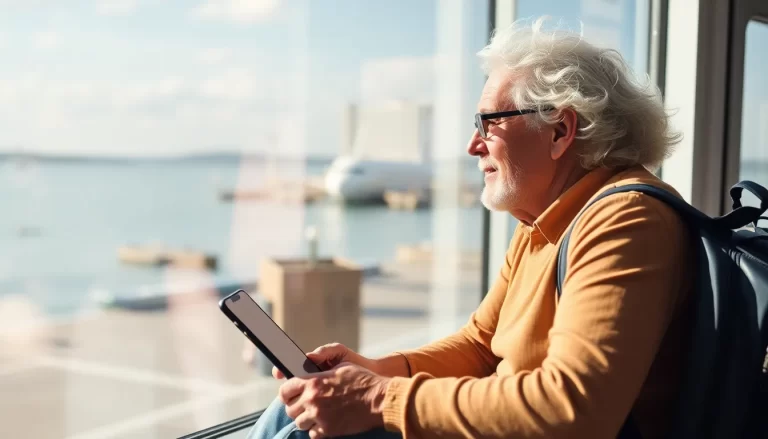Borobudur, a magnificent 9th-century Buddhist monument located in Indonesia, holds the title of the largest Buddhist temple in the world. This awe-inspiring structure is not only an architectural marvel but also a profound spiritual symbol, representing the journey toward enlightenment. With its intricate design, featuring six square platforms topped by three circular platforms adorned with 2,672 relief panels and 504 Buddha statues, Borobudur is a must-see for anyone traveling through Indonesia.
If you’re planning a trip to this iconic site, prepare to be captivated by its rich history and breathtaking views. This guide will equip you with essential information to ensure that your visit to Borobudur is both enjoyable and meaningful.
The Historical Significance of Borobudur
The history of Borobudur is as fascinating as the monument itself. Constructed during the reign of the Sailendra Dynasty in the 9th century, Borobudur was built as a Mahayana Buddhist temple. It served as both a place of worship and a pilgrimage site. However, the temple was abandoned in the 14th century as the region began to embrace Islam, leading to its eventual burial under volcanic ash and jungle growth.
It wasn’t until the 19th century that Borobudur was rediscovered by British Lieutenant Governor-General Thomas Stamford Raffles. In 1814, he initiated efforts to clear the site, revealing the temple complex to the world once more. Since its rediscovery, Borobudur has become a significant tourist destination, drawing visitors from around the globe.
The temple’s design embodies the teachings of Buddhism, representing a journey through the three levels of Buddhist cosmology: Kamadhatu (the world of desire), Rupadhatu (the world of forms), and Arupadhatu (the world of formlessness). Pilgrims ascend from the base to the summit, interpreting the reliefs that narrate the life and teachings of the Buddha. This progression symbolizes the path to enlightenment, culminating in the experience of reaching the pinnacle of the temple.
Best Time to Visit Borobudur
When planning your visit to Borobudur, timing can significantly enhance your experience. The best months to visit are generally during the dry season, which runs from April to October. During these months, the weather is more favorable, allowing for clearer views and a more pleasant experience.
Consider visiting during the early morning or late afternoon to avoid the midday heat and large crowds. Early risers might also want to participate in the sunrise tour, which offers breathtaking views as the sun rises over the temple, casting a magical glow on the ancient stones.
How to Reach Borobudur from Various Locations
Getting to Borobudur is relatively straightforward, with several transportation options available depending on your starting point.
- From Yogyakarta: The most common route is by bus. You can take a public bus from central Yogyakarta to Borobudur for about $2 USD, which takes approximately 60 to 90 minutes. Alternatively, you can opt for a minibus for around $6 USD.
- From Bali: If you’re traveling from Bali, you’ll first need to fly to Yogyakarta. Flights are frequent and take about an hour. From Yogyakarta, follow the above transportation options.
- From Jakarta: A bus or train journey from Jakarta to Yogyakarta is possible, with travel times ranging from 8 to 12 hours. Once in Yogyakarta, you can continue to Borobudur as mentioned above.
Entrance Fees and Opening Hours
Visiting Borobudur comes with some entrance fees. As of now, the cost is $25 USD per person for adults. If you wish to explore both Borobudur and the Prambanan temples, a combined ticket is available for $40 USD, though this does not apply to sunrise tours.
The temple is open to the public daily from 6 AM to 5 PM. To make the most of your visit, consider the daily Borobudur Sunrise Tour priced at $35 USD, which allows you to explore the site before the crowds arrive. This tour typically includes a flashlight and transportation to the temple gate at 4:30 AM, perfect for catching the early morning light.
Essential Tips for Visiting Borobudur
To ensure you have a memorable experience at Borobudur, here are some essential tips:
- Arrive Early: Beat the crowds by arriving before the gates open, or consider a sunrise tour for a more serene experience.
- Avoid Weekends: Weekends attract the largest crowds. If possible, plan your visit for weekdays.
- Dress Appropriately: Comfortable clothing is recommended, as you’ll be on your feet exploring the temple. Ensure your attire is respectful, covering your shoulders and knees.
- Stay Hydrated: Bring water and snacks, as the temple complex is extensive, and you will likely need refreshment.
- Consider a Guide: Hiring a guide can enhance your understanding of the temple’s rich history and the significance of its reliefs.
Frequently Asked Questions About Borobudur
Here are some common questions travelers have about visiting Borobudur:
- What should I wear?
Dress conservatively in loose-fitting clothing that covers your shoulders and knees. Comfortable footwear is also essential. - How do I get to Borobudur?
Public buses and minibuses from Yogyakarta are the most affordable options, costing between $2 and $6 USD. - Can I book a guided tour?
Yes, many companies offer guided tours, including sunrise options that enhance your visit. - What is the entrance fee?
The current entrance fee is $25 USD for adults. - Is Borobudur the largest Buddhist temple?
Yes, it is recognized as the largest Buddhist temple in the world, a testament to ancient engineering and spirituality.
Exploring Nearby Attractions
Your visit to Borobudur can be complemented by exploring other attractions in the area. Some noteworthy sites include:
- Prambanan Temple: This UNESCO World Heritage site is known for its stunning Hindu temples and intricate carvings, located just a short drive from Borobudur.
- Mount Merapi: For the adventurous, a trek to this active volcano offers breathtaking views and an opportunity to experience the local landscape.
- Candi Mendut: Located nearby, this smaller temple features remarkable Buddha statues and is often included in the Borobudur tour circuit.
Conclusion
Borobudur is an extraordinary destination that offers a glimpse into Indonesia’s rich cultural and spiritual heritage. Whether you are an avid historian or simply seeking an unforgettable travel experience, this remarkable temple complex is sure to leave you in awe. Don’t miss the opportunity to explore this UNESCO World Heritage site and immerse yourself in its beauty and significance.







